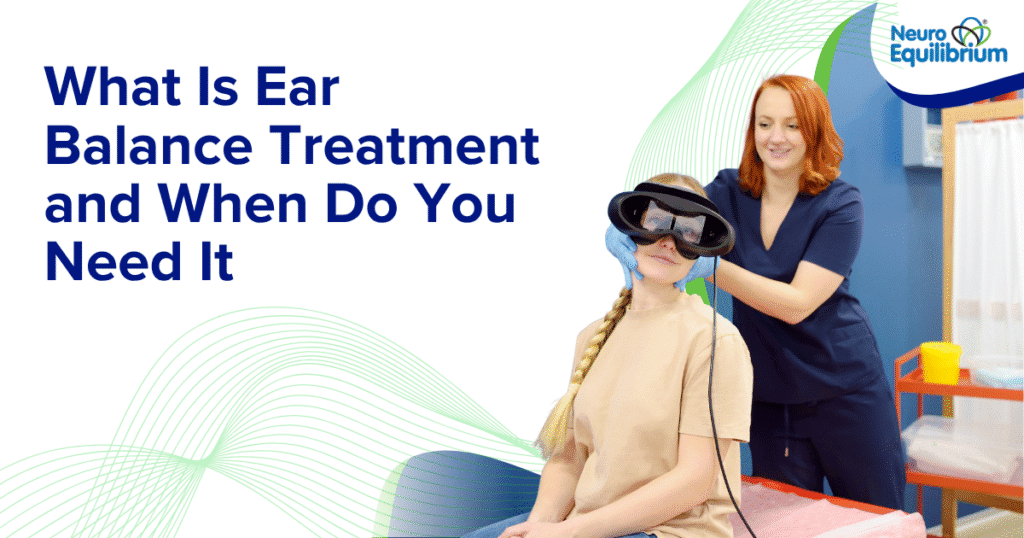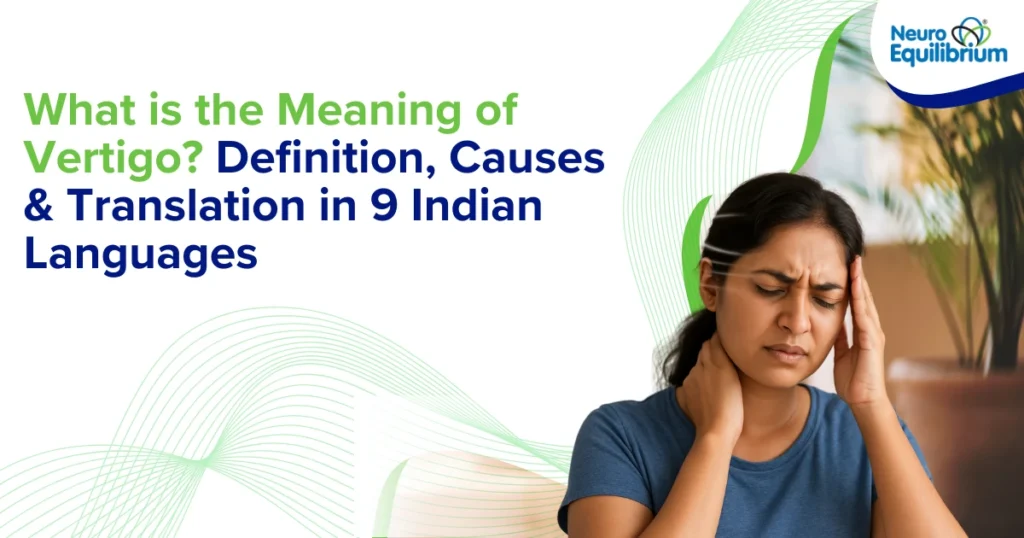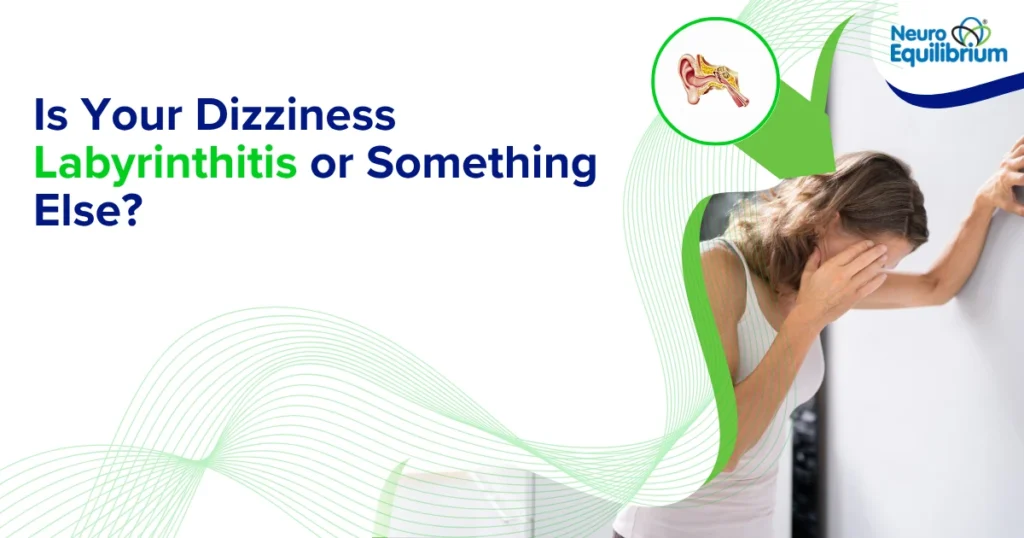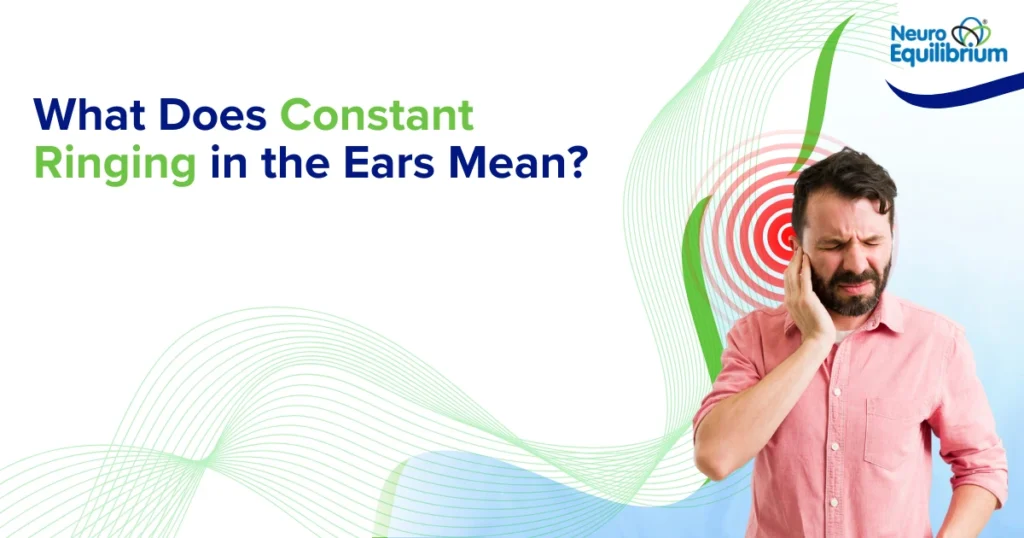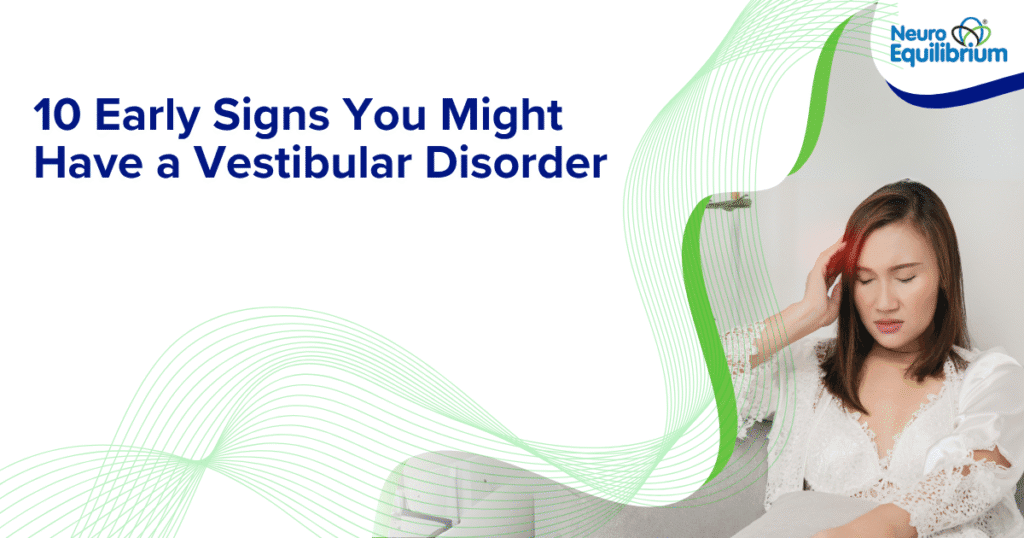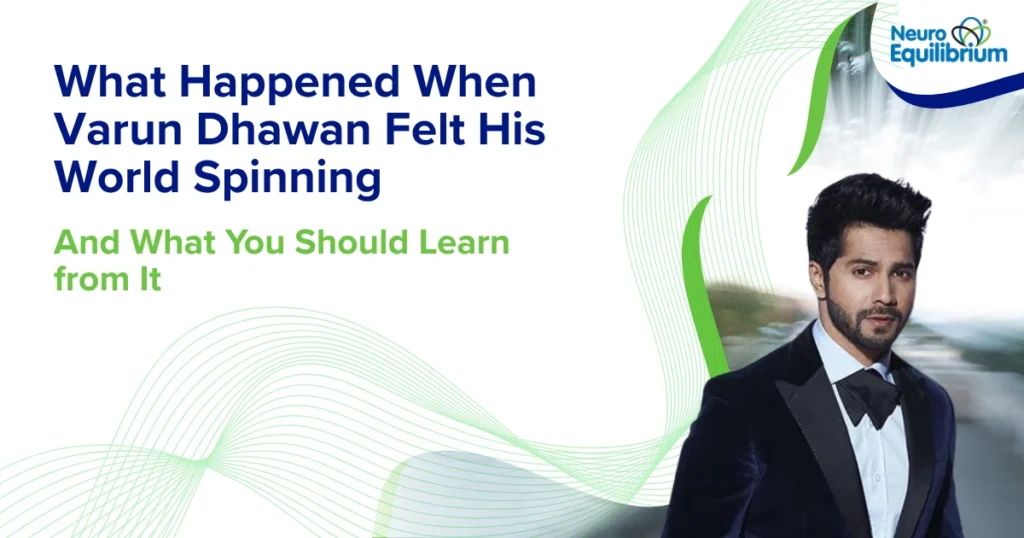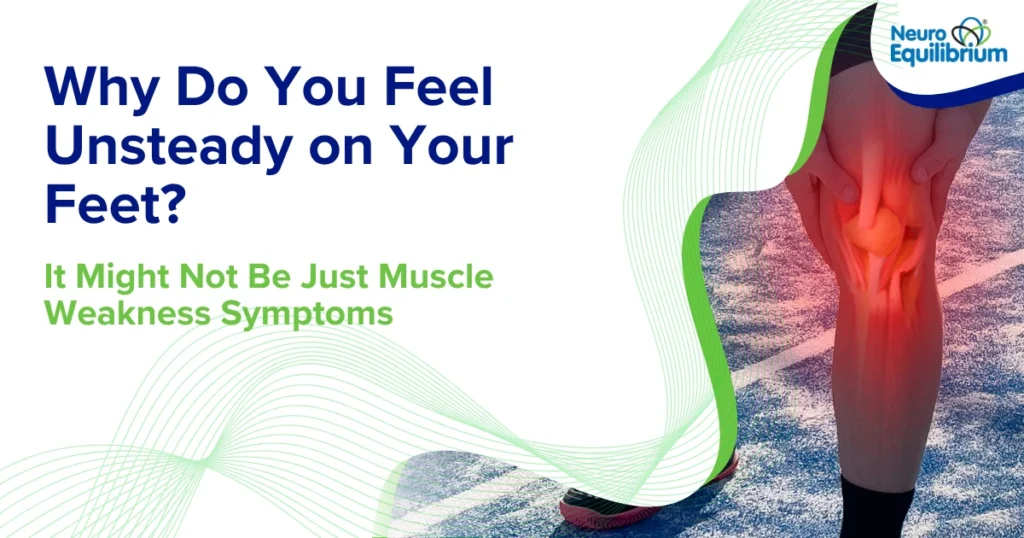Should you have been suffering from dizziness, feeling off-balance, or suffering from vertigo, you are probably seeking some answers. Such sensations are uncomfortable and disruptive and life becomes difficult. You may be wondering whether your problem is severe, whether it can be cured, and what the duration of ear balance treatment could be.
“Ear balance treatment” refers to the comprehensive medical approaches aimed at diagnosing and managing conditions that disrupt your body’s equilibrium. The inner ear’s vestibular system primarily regulates this balance.The inner ear is a complex structure with sensitive structures such as fluid-filled canals and hair cells which detect head position and movement. They transmit messages to your brain so that you are steady. When interrupted, you may experience vertigo or dizziness.
It should be noted that vertigo is not a disease in itself, but rather a symptom of an underlying condition. Approximately 40 significant disorders that may affect the inner ear or brain, as well as some systemic disorders and medications, can cause vertigo. This implies that the treatment of ear balance is particular to the exact cause of your imbalance.
Know More About Ear Balance
- What is a VEMP Test? Exploring the Vestibular Evoked Myogenic Potentials Test for Balance Disorders
- Vertigo and Balance Disorders in Children
- The Invisible Enemy Inside Your Ear: Understanding Vertigo and Its Impact on Balance
When Do You Need Ear Balance Treatment?
You should seek ear balance treatment when you experience symptoms such as:
- Spinning sensation (vertigo), unsteadiness, or what some call “chakkar.”
- Difficulty maintaining balance or a feeling of being “off-balance.”
- Dizziness that persists or fails to resolve.
- Specific head movements which trigger symptoms.
- Associated symptoms include nausea, vomiting, hearing loss, ringing in the ears (tinnitus), or sensitivity to light and sound.
- Impact on daily activities, leading to loss of confidence, fear of falls, or social isolation.
- Increased risk of falls, especially for older individuals, where falls are a major health hazard and a leading cause of injury-related deaths.
The first step is to have an assessment done by a physician, followed by one by neuro-otologists, ENT specialists, or neurologists.
How Is the Need for Treatment Determined? (Diagnosis)
A thorough evaluation is very important because different problems need different treatment approaches. The diagnostic process usually includes:
- Patient History: A detailed discussion about your symptoms, medical history, and any potential triggers. This provides important clues.
- Physical Examination: An assessment of your eye movements, balance, and neurological function.
- Specialized Diagnostic Tests: These are essential for evaluating your balance system and finding the root cause. Common tests include:
- Videonystagmography (VNG) or Electronystagmography (ENG), which looks at eye movements related to the vestibular system and helps determine the location and type of BPPV. Using high-speed infrared cameras is recommended for the best VNG evaluation.
- Subjective Visual Vertical (SVV).
- Dynamic Visual Acuity (DVA).
- Video Head Impulse Test (vHIT).
Subjective Visual Vertical (SVV):
This test checks your perception of vertical alignment. A misperception of vertical may indicate an imbalance in your otolith organs (part of the inner ear), which can be affected in certain vestibular disorders. - Dynamic Visual Acuity (DVA):
DVA measures your ability to see clearly during head movements. It helps assess how well your eyes and vestibular system work together to stabilize your vision while you’re in motion. - Video Head Impulse Test (vHIT):
This test evaluates the function of your semicircular canals by measuring your eye movements in response to quick, small head turns. It helps detect deficits in the vestibulo-ocular reflex, which is essential for maintaining stable vision during movement. - Posturography: Measures your balance and stability.
- Audiometry (Hearing Tests): Checks for associated hearing loss, which can point to conditions like Meniere’s disease or Acoustic Neuroma.
- Imaging (MRI, CT scans): These might be needed to rule out central causes like tumors, strokes, or certain neurological diseases.
These are rarely needed but may be recommended to rule out central causes such as tumors, strokes, or certain neurological conditions if symptoms suggest a brain-related issue.
- Cognitive screening: Evaluates your decision-making abilities and how you perceive fall risks, especially for older patients.
- Blood tests: To check for underlying conditions like anemia, uncontrolled diabetes, or Vitamin D deficiency.
- Blood pressure and pulse readings when lying down and standing, to detect orthostatic hypotension (a drop in blood pressure when you stand up).
What Does Ear Balance Treatment Involve?
The treatment will be tailored to your particular diagnosis, age, other medical conditions and your current balance status. It is concerned with the problem that lies at the base, and not merely the hiding of symptoms. Prolonged use of medicines to repress symptoms may do the exact opposite of letting your body heal itself.
Here are common treatment approaches:
- Canalith Repositioning Maneuvers (for BPPV):
- BPPV is one of the most common causes of vertigo, happening when calcium carbonate crystals get dislodged in the inner ear’s semicircular canals.
- Treatment involves a series of specific head and body movements designed to guide these displaced crystals back to their original position.
- There are 14 different types of BPPV, and each needs a specific maneuver, like Epley’s, Semont’s, Barbecue, Zuma, or Yacovino etc.
- Correctly understanding the nystagmus (jerky eye movements) during diagnostic tests is key to choosing the right maneuver.
- When the correct maneuver is performed, patients can feel instant relief. Technology like 3D visual simulation and guidance systems help clinicians get the head angles right for better results.
- Medications:
- Medications are prescribed to treat the specific underlying disease, not just to hide symptoms.
- For Vestibular Neuritis (inflammation of the balance nerve), high-dose steroids might be used to reduce inflammation.
- For Meniere’s Disease (increased inner ear fluid pressure), medical treatments work to reduce inner ear pressure.
- For Vestibular Migraine, “migraine prophylaxis” medications may be prescribed, with the choice depending on factors like age, weight, and other existing conditions.
- Anti-vertigo medications might be prescribed to relieve immediate symptoms but should never be taken for more than a few days.
- Vestibular Rehabilitation Therapy (VRT):
- This involves customized exercises to improve balance and stability. It helps your brain learn to adapt to inner ear dysfunction, a process called vestibular compensation.
- VRT is a main treatment for conditions like Vestibular Neuritis or peripheral vestibulopathy (weakness of balance nerve function).
- Newer technologies, such as app-based modules, virtual reality (VR), and augmented reality (AR) programs, are used to make rehabilitation more engaging, simulate real-world situations, and track progress. This helps patients stick with their exercises and get better results.
- Lifestyle and Dietary Modifications:
- For Meniere’s Disease, this includes restricting salt to stabilize inner ear fluid balance.
- For Vestibular Migraine, management involves:
- Identifying and avoiding triggers like not enough sleep, skipping meals, stress, too much screen time, loud sounds, bright lights, and certain foods (e.g., aged cheeses, chocolate, processed meats, MSG, red wine).
- Keeping regular eating and sleeping schedules.
- Stress management techniques.
- General recommendations for dizziness include staying hydrated, drinking less caffeine and alcohol, and keeping blood sugar levels stable. While these changes are helpful, diet alone may not completely resolve vertigo; they work best as part of a wider treatment plan.
- Cognitive Behavioral Therapy (CBT):
- CBT is a helpful addition for dizziness that keeps coming back or won’t go away, especially for conditions like Persistent Postural Perceptual Dizziness (PPPD).
- It helps patients understand how their thoughts, feelings, and behaviors relate to balance issues. It teaches them to replace negative thinking with more helpful patterns.
- CBT also teaches coping strategies, relaxation techniques (like progressive muscle relaxation and deep breathing), and exposure therapy to gradually help patients reduce sensitivity to triggers, get used to triggers, building their confidence.
- Addressing Systemic Issues and Fall Prevention:
- For dizziness caused by systemic disorders or medications, treatment involves reviewing and adjusting medications (e.g., sedatives, blood pressure drugs, anticholinergic medications) to avoid too many drugs or bad interactions.
- Managing conditions like blood pressure fluctuations (orthostatic hypotension), anemia, uncontrolled diabetes, and vitamin D deficiency is very important.
- For older adults, fall prevention is critical. This includes rehabilitation exercises to improve strength, stability, balance, flexibility, and walking. Making changes at home, like installing handrails and improving lighting, also helps reduce hazards.
The aim of the ear balance treatment is to treat patients with a correct diagnosis and scientific, rational, and individual approach to treatment that will allow patients to restore their balance, confidence, and quality of life.
How NeuroEquilibrium Can Help
NeuroEquilibrium is the largest medical network in India specializing in the field of vertigo and balance disorders, and has more than 220+ centers throughout the country. We are not concerned with merely suppressing your balance symptoms but dealing with the cause of the problem
Here’s how we can help:
- Advanced diagnostics: Our diagnostic technology is modern and up to date, such as Videonystagmography (VNG), Video Head Impulse Test (vHIT), Subjective Visual Vertical (SVV), Dynamic Visual Acuity (DVA), and Audiometry. These tests are useful to us in accurately determining what is causing your vertigo.
- Individualized, tech-enabled treatment plans: Our specialized neuro-otologists develop customized treatment plans depending on your particular diagnosis. In the case of BPPV, we do repositioning maneuvers such as Epley, Semont, and others. In the case of other conditions we provide customized vestibular rehabilitation treatment, lifestyle management and medication control where relevant.
- Pan-India clinic network + expert neuro-otologists: We also have a wide network, so you can get expert care. Our specialists are very experienced in the diagnosis and treatment of all types of balance disorders, even complex and rare.
- Emphasis on treating the root cause:We will determine what is really causing your symptoms, and give you effective, lasting relief, not just masking the problem.
Book an appointment today.
FAQs
Will I need surgery for my ear balance problem?
Surgical intervention is rarely required for ear balance disorders like BPPV, vestibular migraine, and PPPD. Treatment is typically non-invasive and may include positional maneuvers, vestibular rehabilitation, lifestyle changes, or medications. Among these, therapy remains the most frequently used and effective treatment option.
Is vertigo always serious?
Not always. Vertigo is scary, but the usual causes, such as BPPV, are not serious and are easily treated. Nevertheless, the vertigo may sometimes be a sign of a more severe problem, so it is always a good idea to have it checked professionally to exclude anything dangerous.
Can this be cured or only managed?
Far far away, behind the word mountains, far from the countries Vokalia and Consonantia, there live the blind texts. Separated they live in Bookmarksgrove right at the coast of the Semantics, a large language ocean.
What causes imbalance related to the ear?
The balance system can be affected by inner ear problems such as BPPV, Meniere disease, or vestibular neuritis which can result in dizziness, vertigo and unsteadiness.
How can I tell that I require ear balance treatment?
When you experience persistent dizziness, vertigo, instability, or attacks provoked by movements of the head it is high time to turn to a vertigo specialist.






